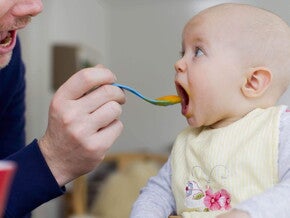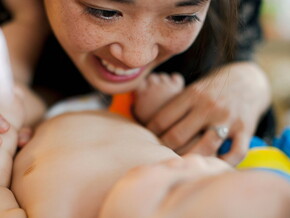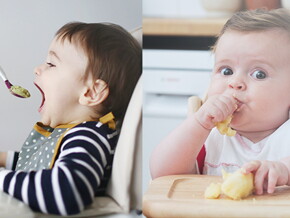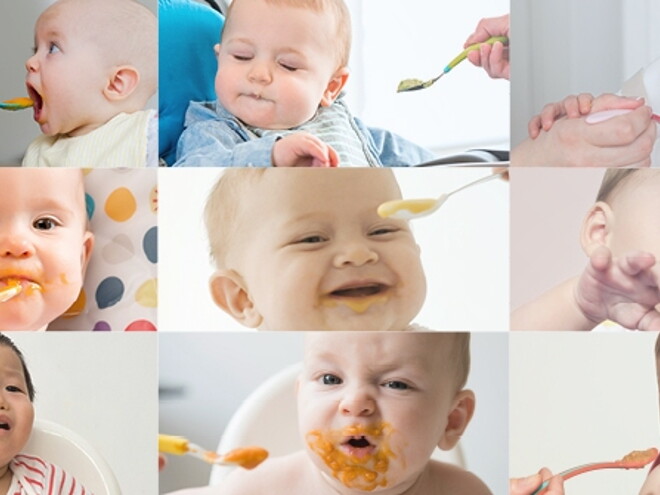
While the principles of feeding you’ve been following since birth remain the same, there are some new feeding cues to learn now that you are offering your baby complementary foods.
Let responsive feeding be your guide
Your role in feeding your baby is to offer a variety of healthy foods at regular meal and snack times. It is up to your baby to decide if they will eat what is offered, and how much they will eat. As you offer your baby a variety of healthy foods—and follow their lead as far as how much they want to eat—you are establishing healthy eating habits for your little one that can last for years.
Continue to follow the rules of responsive feeding as you’ve done since your baby was born (see Are they hungry? How to read your baby’s signs). This means providing healthy options and letting your baby decide how much to eat, without pressuring them, or restricting how much food they eat. This approach will help keep your baby on track for healthy growth.
Remember that breast milk and/or formula are still your baby’s main source of nutrition. These early days of eating are a good time to begin to teach your baby how they can continue to communicate, later with words, that they are hungry or full. Responding when your baby is hungry by offering nutritious foods, and when they are full by putting down the spoon, can help show them that they are in charge of how much they need to eat. Practicing these feeding approaches helps set the stage for good eating habits to last a lifetime.
At six to eight months old, there are new hunger and fullness cues your baby may be showing you, which are shown below.

FACE 1. The open-mouthed lean
What to look for: As soon as they see the approaching loaded spoon, they opens their mouth and lean towards you.
What they‘re telling you: “My tummy is ready for food!”

FACE 2. The spoon snubs
What to look for: As you offer a spoonful of food, they turn their head away.
What they’re telling you: “No more thanks, I’ve had enough.”
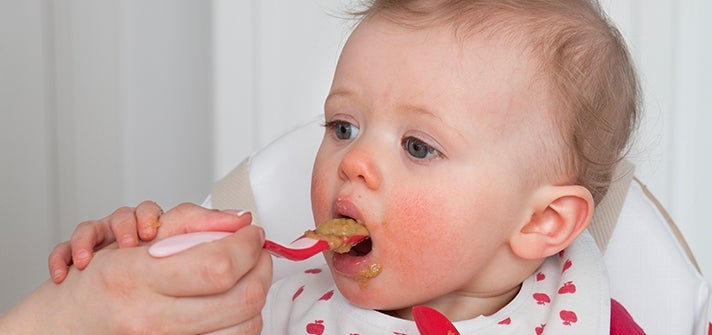
FACE 3. The spoon swipe
What to look for: They try to grab or swipe the spoon as you’re feeding them. (If they do this, you could also offer them their own spoon to encourage independence!)
What they’re telling you: “I’m hungry, please listen to what I’m telling you!”

FACE 4. The clamped mouth
What to look for: Your offering of food is met with a closed mouth, or even one that’s covered by their hands.
What they’re telling you: “Enough thanks, I’m full!”
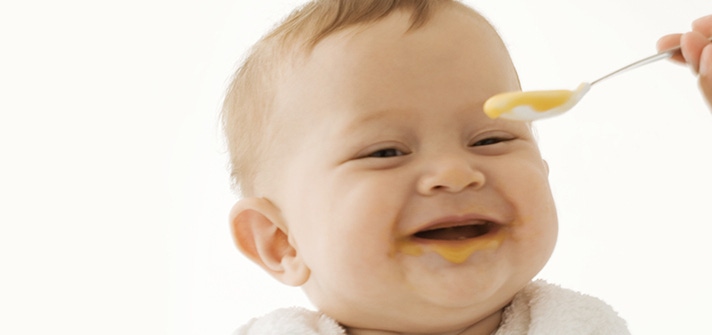
FACE 5. The smile
What to look for: As you’re feeding, they respond with a big grin and move toward the spoon—or open their mouth.
What they’re telling you: “I’m still hungry, keep it coming.”

FACE 6. The spoon shove
What to look for: They push the approaching spoon away before it gets close to their face. Not to be confused with the spoon swipe (or grab).
What they‘re telling you: “This mealtime is over.”

FACE 7. The fussy cry
What to look for: Fussing or crying as they watch you get their food ready—the cries are different to those they make when they need a diaper change or some entertainment.
What they’re telling you: “I’m hungry, when’s my food coming?”

FACE 8. The ejection
What to look for: They turn their head away from the spoon or spit food out after they accept the spoon into their mouth.
What they’re telling you: “I’m finished!”
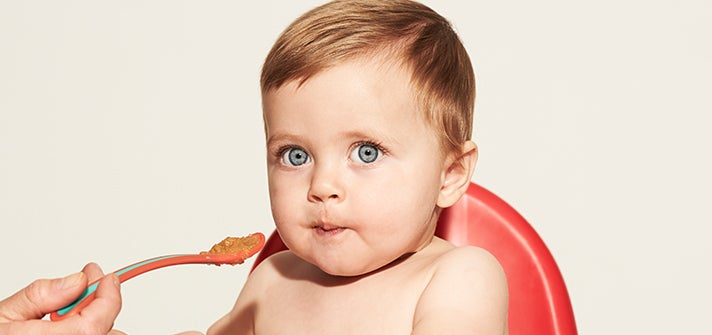
FACE 9. The distracted gaze
What to look for: Your little one is repeatedly easily distracted by anything that’s not part of eating. They gaze around and ignore the spoon.
What they’re telling you: “I’m not interested in food anymore. We’re done here.”
Sources
Black MM, Aboud FE. Responsive feeding is embedded in a theoretical framework of responsive parenting. J Nutr 2011; 141(3):490-4.
Dattilo AM Programming long-term health: Effect of parent feeding approaches on long-term diet and eating patterns. In: Early nutrition and long-term health, mechanisms, consequences and opportunities. Ed., Saavedra and Dattilo, Elsevier, 2017: 471-95.
DiSantis KI, Hodges EA, Johnson SL et al. The role of responsive feeding in overweight during infancy and toddlerhood: A systematic review. Int J Obes (Lond) 2011; 35 (4):480-92.
Joint statement of Health Canada, Canadian Paediatric Society, Dietitians of Canada, and Breastfeeding Committee for Canada. Nutrition for Healthy Term Infants: Recommendations from Six to 24 Months. 2014. https://www.canada.ca/en/health-canada/services/food-nutrition/healthy-…
McNally J, Hugh-Jones S, Caton S et al. Communicating hunger and satiation in the first 2 years of life: a systematic review. Matern Child Nutr 2016; 12(2):205-28.











